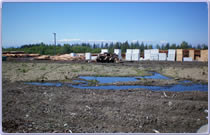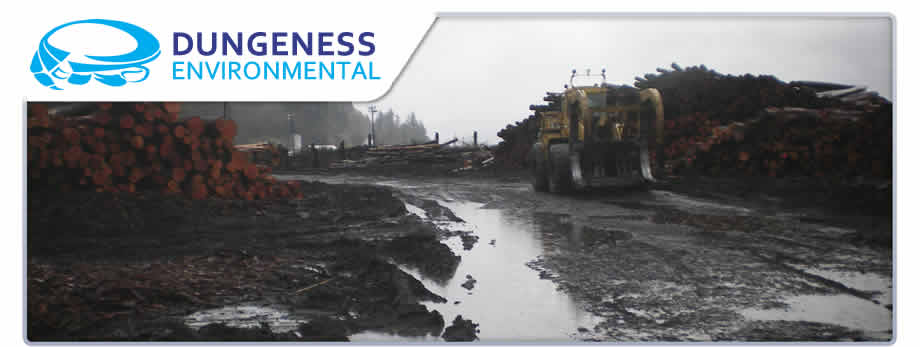

Pilot-Scale Stormwater Treatment Study
Stormwater run-off from log yards and saw mills has long been a difficult waste stream to manage. The challenge arises from ability of wood and bark to easily leach high levels of organics (tannins, lignins, phenolics and resin acids) into mobile water. These organics can remain in the suspended state for months and exhibit toxicity to aquatic life as organisms break them down leading to a reduction in the concentration of oxygen. While pollution prevention measures offer some relief, in most cases this is not enough to reduce the turbidity and dissolved organics to meet state and federal discharge standards.
While numerous biological, physical and chemical solutions have been evaluated with varying levels of success, very few have been implemented due to the high costs. The staff of Dungeness have been studying this issue for years and have performed numerous treatability studies. Recently in the Dungeness lab we have discovered a very effective approach that is a fraction of the cost of traditional methods.
In 2010, Dungeness further evaluated this breakthrough technology on a pilot-scale at a local log yard with very good results. We processed over 7,000 gallons of stormwater run-off which had a high concentration of suspended solids and dissolved organics. Once the system was optimized the discharge turbidity was maintained below 10 NTU while the chemical oxygen demand was reduced from 260 to 53 mg/L. An aquatic toxicity test also demonstrated that the discharge is safe for aquatic life.
Dungeness provided the client with a Pilot-Scale Treatability Report which includes a summary of the results, a conceptual treatment system and cost estimate.
Back to ApplicationsSend us a water sample
Contact us by clicking above and tell us about your project. Send us a water sample from your project and have it analyzed for treatability FREE!!!
